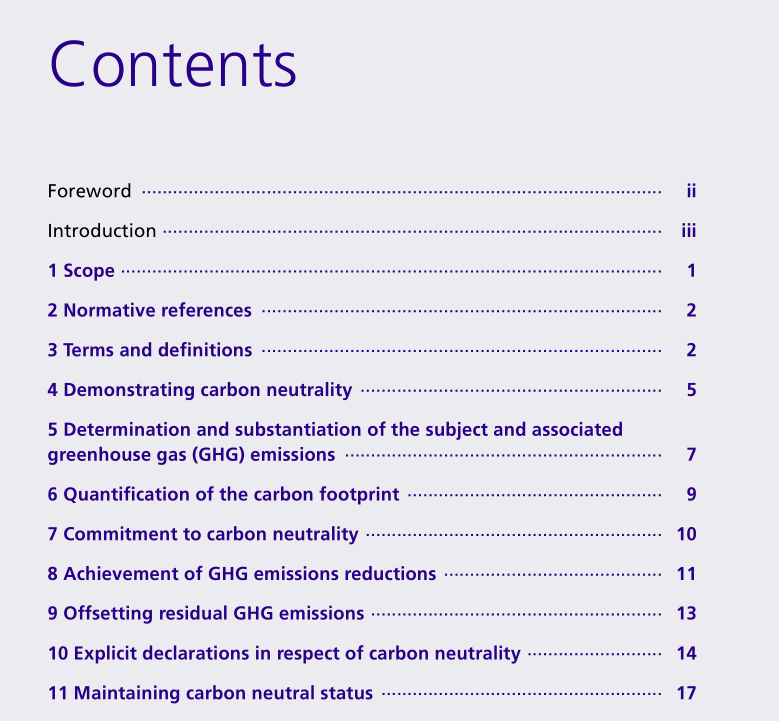PAS 2060:2014 pdf download.Specifcation for the demonstration of carbon neutrality
1 Scope
This PAS specifes requirements to be met by any entity seeking to demonstrate carbon neutrality through the quantifcation, reduction and offsetting of greenhouse gas (GHG) emissions from a uniquely identifed subject. It is not the intention of this PAS to exclude any specifc subjects or entities. It is intended that this specifcation be used by any entity, including: •?regional or local government; •?communities; •?organizations/companies or parts of organizations (including brands); •?clubs or social groups; •?families; •?individuals. This specifcation is applicable to the demonstration of carbon neutrality in respect of any subjects selected and defned by the applying entity, including for their: •?activities; •?products; •?services; •?buildings; •?projects and major developments; •?towns and cities; •?events. Achieving carbon neutrality solely through reduction of direct GHG emissions will not be practicable in most instances and hence carbon offsets (see 3.7) are likely to play a role in achieving carbon neutrality. However, this specifcation does not make provision for a declaration of the achievement of carbon neutrality solely through offsetting other than for the frst application period, where to facilitate initiation of the process, concession is made to enable entities to take up the option of making a declaration of the achievement of carbon neutrality solely through carbon offsets. In all subsequent periods it is essential that a reduction in absolute terms and/or a reduction in emission intensity be evident for the defned subject, if carbon neutral status in accordance with PAS 2060 is to be claimed. This specifcation provides for communication at two levels. The primary level requires one of two forms of declaration as follows:1. The declaration of commitment to carbon neutrality requires the entity to establish the carbon footprint of the subject and to document a carbon footprint management plan describing how the entity intends to achieve carbon neutrality with respect to the defned subject. 2. The declaration of achievement of carbon neutrality requires the entity to have achieved reductions in the carbon footprint of the subject and to have offset remaining GHG emissions. Such declarations of achievement therefore only apply to the scope and period validated and should the entity intend to extend its claim to future periods, further validation will be required. The secondary level is a “representative statement” couched in more consumer friendly terms, for use in promotional material. However, the use of a representative statement is only permitted in addition to the publication of the formal declaration. This specifcation provides for the validation of declarations by the entity itself as well as by other parties and independent third parties, engaged to do so. To claim compliance with this PAS, it is necessary that the entity satisfy all of the requirements within the specifcation relevant to the declaration being made. This specifcation establishes a set of principles against which the selection of methodologies for GHG emissions quantifcation and offsetting can be undertaken. It also incorporates examples of widely accepted standards and methodologies (see Annex C) that can be presumed to meet those principles although other standards can also meet this requirement. However, the entity undertaking assessment is still required to confrm that the methodology accepted is being used in accordance with those principles. Annex A (Normative) sets out the permissible declarations in respect of carbon neutrality including that for a unifed declaration for entities wishing to declare both achievement of and future commitment to, carbon neutrality.
2 Normative references
The documents identifed in Annex C, Table C.1 of this PAS can be fundamental to its successful application but are not normative in the usual standards-related meaning of that term. This is because choice as to which document provides the most appropriate methodology for any particular entity or subject rests with the user of this PAS, on the basis of the principles and requirements embodied in it. Within the terms of this PAS however, conformity to the requirements of any external documents selected by the applying entity, is an integral part of conformity to this specifcation.
PAS 2060:2014 pdf download
